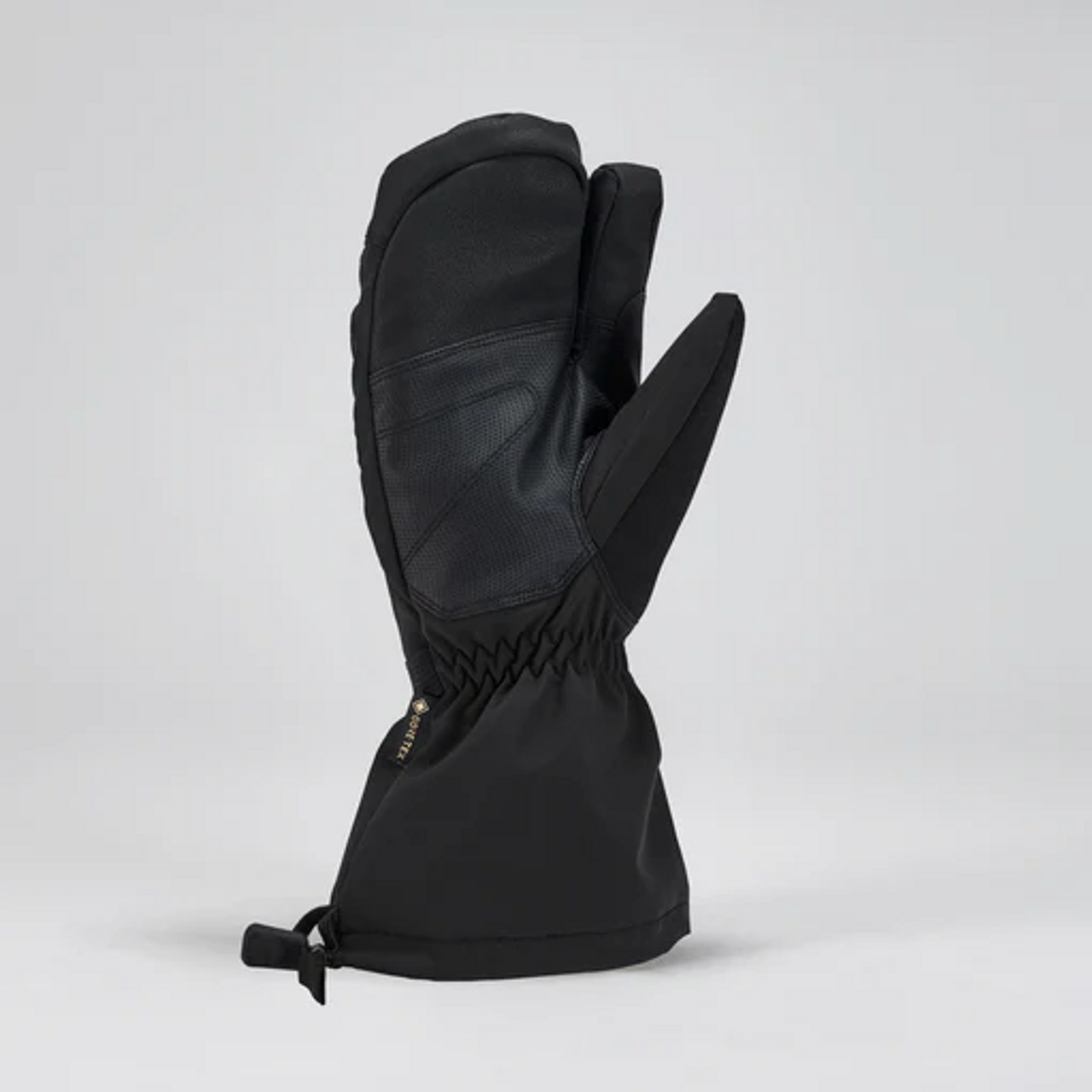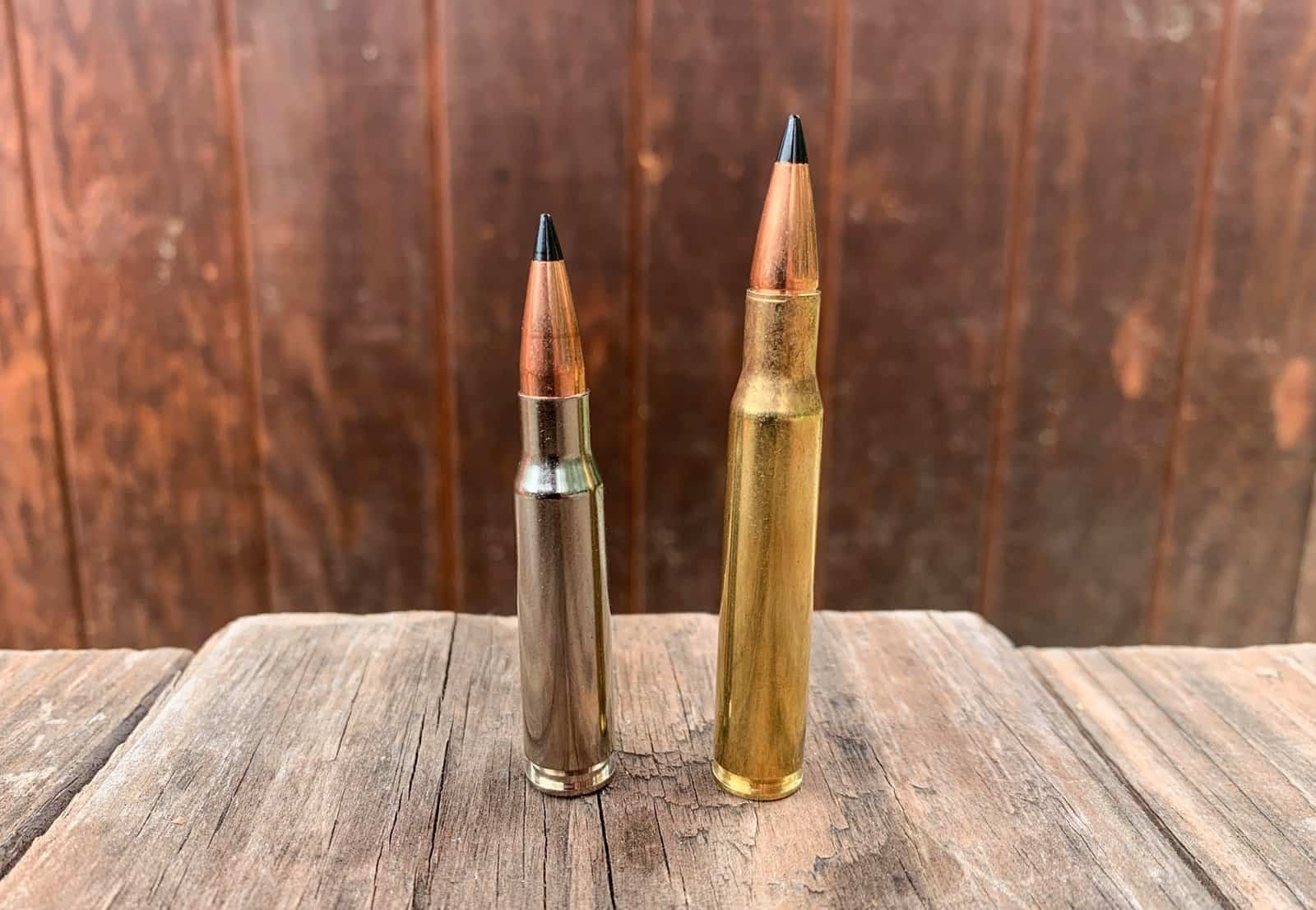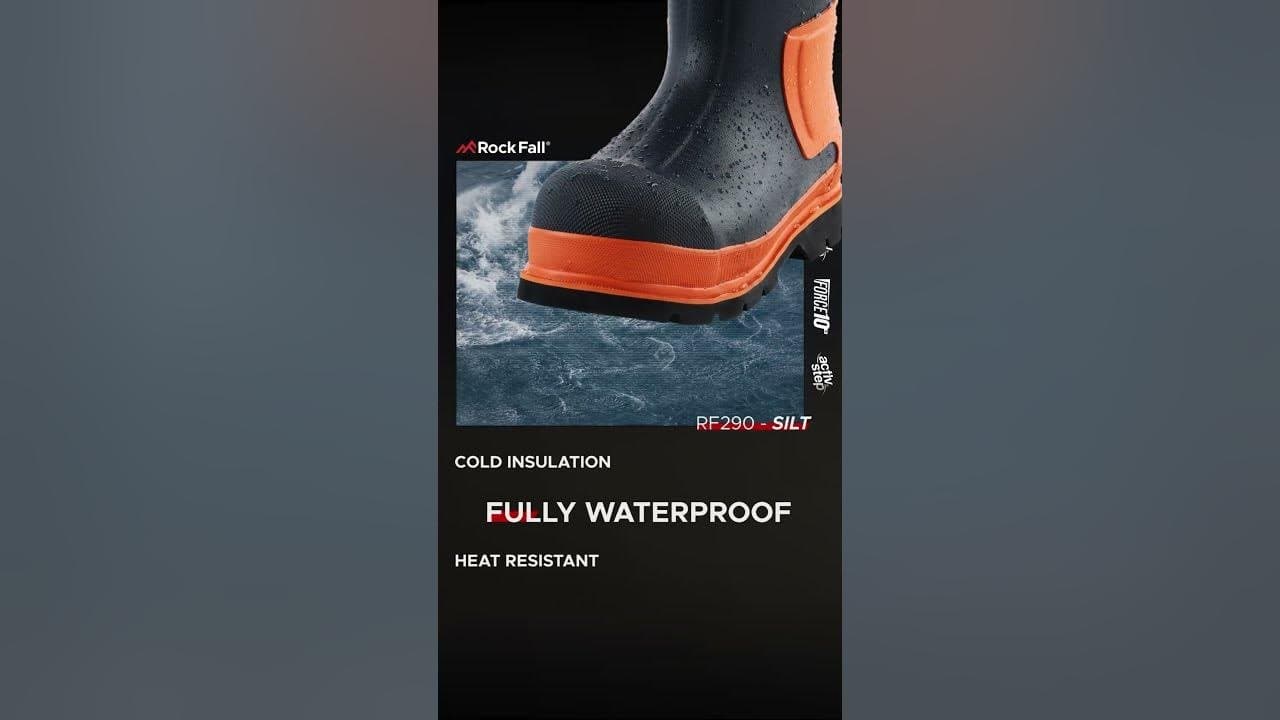Thinsulate is a synthetic insulation, while Gore-Tex is a waterproof and breathable fabric. Both materials enhance outdoor gear but serve different functions.
Exploring the outdoors requires gear that can withstand the elements, ensuring comfort and protection. Thinsulate, a thin insulation material, excels in trapping body heat, providing warmth without the bulk found in traditional insulating materials. Favorite among cold-weather enthusiasts, Thinsulate is ideal for chilly conditions.
On the other hand, Gore-Tex stands out for its exceptional water-resistance and breathability, offering a shield against rain and wind while allowing sweat vapor to escape. This makes Gore-Tex a go-to for a vast range of activities where staying dry is crucial. Outdoor adventurers often must choose between or combine these materials in their attire and equipment based on their specific protection needs against cold and wet environments.

Credit: www.troopsmilitarysupply.com
Contents
Thinsulate And Gore-tex: Unraveling The Fabric Giants
Unraveling the Fabric Giants: Thinsulate and Gore-Tex, a tale of innovation and the outdoors. Two titans in the world of thermal and waterproof fabrics. Let’s dive into their histories and how they revolutionized the industry.
The Rise Of Thinsulate
Thinsulate, a thermal insulation brand by 3M, surfaced in the 1970s. It became a go-to for warmth without the bulk. This lightweight wonder uses fine microfibers to trap air molecules, keeping you cozy. Below are some key points about Thinsulate:
- Light as a feather
- Keeps moisture out
- Works in wet conditions
Various uses abound for this versatile fabric, from clothing to gear.
Gore-tex: Revolution In Waterproofing
Enter Gore-Tex, the game-changing fabric of the 1970s. It promised dryness like never before. Gore-Tex is the brainchild of W.L. Gore & Associates, boasting a patented technology. This fabric ensures you stay dry and comfortable. Key features of Gore-Tex:
- Windproof
- Breathable membrane
- Water beads away
From intense downpours to subtle drizzles, Gore-Tex keeps water out. It’s a favorite for outdoor enthusiasts. Experience the outdoors without worry.

Credit: www.amazon.com
The Science Of Warmth
Staying warm isn’t just about piling on layers.
Technological advancements in fabrics enhance warmth and comfort. Key players like Thinsulate and Gore-Tex have revolutionized outdoor gear.
How Thinsulate Traps Body Heat
Thinsulate, a synthetic fiber, works by trapping air molecules.
The fibers are much thinner than traditional insulating materials, allowing them to pack together tightly.
This density blocks the cold while keeping body heat in.
- Dense fiber structure
- Traps air effectively
- Retains warmth
Gore-tex’s Breathable Technology
Gore-Tex, meanwhile, is known for being incredibly breathable.
It allows sweat vapor to escape, reducing overheating and moisture buildup.
about 20,000 times smaller than a drop of water,
making it waterproof yet breathable.
| Feature | Benefit |
|---|---|
| Microscopic pores | Keeps water out |
| Vapor transmission | Allows sweat to escape |
| Waterproof | Dry comfort in wet conditions |
| Breathable | Reduces moisture buildup |
Durability And Longevity Showdown
Welcome to the ‘Durability and Longevity Showdown’ between two titans of the fabric world: Thinsulate and Gore-Tex. Outdoor enthusiasts often debate which material best withstands the test of time. Which is the toughest? Which stays reliable season after season? The answers lie in the heart of their endurance. Let’s dive into an analysis of Thinsulate and Gore-Tex and uncover which fabric takes the crown for durability.
Assessing Thinsulate’s Endurance
Thinsulate, known for its warmth-to-thickness ratio, boasts impressive durability. This synthetic fiber retains its insulating properties over time. What makes Thinsulate so robust? Its fibers are finer than those of traditional insulation, allowing it to resist normal wear and tear. Additionally, it dries quickly and is less susceptible to mildew growth. Let’s look at the facts:
- Resistance to Compression: Thinsulate maintains its shape, even with frequent use.
- Quick Drying: Dampness affects longevity; Thinsulate’s quick-drying properties prevent long-term damage.
- Less Prone to Mildew: Fibers resist moisture build-up, a common cause of material breakdown.
Testing Gore-tex Against The Elements
Gore-Tex, famed for its waterproof and breathable membrane, faces nature’s harshness head-on. This material’s ability to withstand extreme weather conditions is unparalleled. Here’s how Gore-Tex stands against the elements:
| Element | Effect on Gore-Tex | Endurance |
|---|---|---|
| Water | Stays dry under wet conditions | High |
| Wind | Blocks wind effectively | High |
| Snow | Keeps warmth, repels snow | High |
| Wear and Tear | Durable, resists abrasions | Moderate to High |
In regular conditions, Gore-Tex gear can last many seasons. Care is simple, requiring only regular cleaning and occasional re-waterproofing to maintain its protective qualities.
The Comfort Factor
Choosing the right fabric for outdoor gear means balancing warmth and staying dry. Thinsulate and Gore-Tex are popular, but how do they stack up comfort-wise? Let’s delve into the cozy fit advantage of Thinsulate and how Gore-Tex ensures comfort through dryness.
Thinsulate’s Cozy Fit Advantage
Thinsulate is a synthetic insulation, renowned for its warmth-to-thickness ratio. It uses very fine fibers to trap air molecules, which provides excellent insulation. This means thicker layers aren’t needed, resulting in clothing that’s not only warm but also lightweight and flexible.
- Thin yet warm
- Flexible material supports freedom of movement
- Soft texture enhances comfort
Gore-tex And The Comfort Of Dryness
Gore-Tex fabric is celebrated for its breathable waterproof quality. This membrane technology has tiny pores that are too small for water droplets to pass through but large enough for vapor to escape. Therefore, it keeps you dry from both outside moisture and internal sweat.
| Feature | Benefit |
|---|---|
| Waterproof | Stay dry in rain or snow |
| Breathable | Prevent overheating and clamminess |
Versatility In Application
When seeking out material for outdoor gear, ‘Versatility in Application’ matters. Thinsulate and Gore-Tex offer protection against the elements but shine in different scenarios.
Where Thinsulate Shines
Thinsulate, known for its lightweight warmth, has specific strengths:
- Cold weather clothing: Its thin profile fits snugly in jackets.
- Footwear insulation: Boots with Thinsulate provide warmth without bulk.
- Hats and gloves: Eases movement while retaining heat.
Gore-tex’s Diverse Use Cases
Gore-Tex adapts to a broad range of products:
| Product | Use Case |
|---|---|
| Outerwear | Blocks wind and repels water effectively. |
| Shoes | Breathable, waterproof protection for feet. |
| Gloves | Maintains dexterity while keeping hands dry. |
The Price Of Warmth
Choosing the right material for staying warm matters. The battle between Thinsulate and Gore-Tex is about more than just heat. It also concerns your wallet. Get ready to understand what these materials will cost you while they keep you cozy.
Cost Comparison
The battle of costs between these insulating giants is a close one. We need to break down the numbers to see the real difference. A side-by-side comparison shows us the start-up costs for jackets, boots, and gloves.
| Item | Thinsulate | Gore-Tex |
|---|---|---|
| Jackets | $50 – $200 | $100 – $500 |
| Boots | $40 – $180 | $80 – $300 |
| Gloves | $20 – $80 | $40 – $120 |
Thinsulate often comes cheaper up-front than Gore-Tex. Gore-Tex’s price reflects its brand recognition and tech-advances.
Investing In Longevity Or Immediate Warmth
Consider the lifespan of your gear when making a choice.
Some key points to note:
- Gore-Tex offers durable, longer-lasting products.
- Gore-Tex garments might survive many winters.
- Thinsulate provides instant warmth for a lower cost.
- Thinsulate products may need replacing sooner.
Think long-term or short-term satisfaction. Gore-Tex could be a wise investment for frequent outdoor adventurers. Thinsulate is ideal for those seeking affordable, immediate warmth.
Real-world Performance: Consumer Stories
Choosing the right fabric technology for outdoor gear is crucial. Thinsulate and Gore-Tex stand out in the market. Users rave about their experiences with both. Let’s dive into real-life stories to help you decide between Thinsulate insulation and Gore-Tex waterproofing for your next adventure.
Thinsulate Testimonials
- Warm Feet on Icy Treks: John from Minnesota loves his Thinsulate boots. Even in -20°F, his feet stay warm.
- Cozy Commutes: Sarah in New York wears a Thinsulate coat. Winters feel milder now, she claims.
- Light and Toasty: Mark shares that his Thinsulate gloves are not bulky. He says they keep his hands warm without the weight.
Gore-tex User Experiences
- Dry Hikes, Happy Trails: Emily reports her Gore-Tex jacket kept her dry during a downpour in Oregon.
- Breathable and Waterproof: Kyle notes his sweaty feet stay dry with Gore-Tex shoes.
- Wind-Proof Cyclist: Sophie from Chicago praises her Gore-Tex windbreaker. Lakefront rides are a breeze now.
The Environmental Impact
The Environmental Impact of choosing between Thinsulate and Gore-Tex is vital. Users often consider warmth and waterproofing. They should also think about the planet. Both materials tout benefits for those braving the elements. Yet their production and disposal raise questions. Let’s unpack the ecological footprint of Thinsulate and Gore-Tex.
Thinsulate And Sustainability
Thinsulate, made by 3M, is known for trapping heat. It uses thin fibers to keep users warm. But what’s its stance on sustainability? 3M has focused on reducing waste. They aim to improve air quality during Thinsulate production. The brand wants to reduce greenhouse gases too. They consider the full lifecycle of products. They strive for better environmental choices.
- Recycling: Some Thinsulate products are recyclable.
- Manufacturing: A focus on cleaner, more efficient processes.
- Energy Use: Efforts to lower energy consumption in production.
Gore-tex’s Eco-friendly Initiatives
Gore-Tex, another top choice, is waterproof and breathable. Their environmental policy gained attention. Gore-Tex fabrics took steps to be more sustainable. They now eliminate harmful PFCs of Environmental Concern. Their ongoing goals pledge responsibility. Gore-Tex focuses on durability. Longer-lasting products mean less waste.
- PFC Free: Gore-Tex products work to avoid harmful chemicals.
- Repair and Recycle: Gore encourages repairing products over discarding them.
- Responsible Supply Chain: They ensure materials are sourced responsibly.
Gore-Tex also joined bluesign®. This means they meet high environmental standards. They guarantee that their materials are safe. This is for the environment, workers, and customers.
The Verdict: Layering Up For The Win
When winter whispers its chilly tales, the debate of Thinsulate versus Gore-Tex reaches its peak. Is one better than the other? The verdict falls heavily on the art of layering. Layering up is the key to conquering cold, and combining the right materials can make all the difference. Today, we’re exploring an ultimate match in the cold-weather fight: the fusion of Thinsulate and Gore-Tex.
Combining Thinsulate And Gore-tex
Think of Thinsulate as your cozy blanket and Gore-Tex as your windproof shield; together, they are invincible. Thinsulate insulation traps and holds body heat, while Gore-Tex offers breathable, waterproof protection. Here’s how they complement each other:
- Thinsulate: Retain warmth with its fine microfibers
- Gore-Tex: Blocks moisture and lets sweat escape
By wearing Thinsulate layers beneath a Gore-Tex outer layer, you enjoy a warm, dry experience that stands up to the wildest winter weather.
The Ultimate Cold-weather Combo
To create the ultimate cold-weather combo, consider the following:
| Layer | Material | Function |
|---|---|---|
| Base | Moisture-Wicking Fabric | Keeps skin dry |
| Middle | Thinsulate | Traps heat |
| Outer | Gore-Tex | Protects from wind and water |
Remember, the base layer should be snug, the Thinsulate layer adequate for the temperature, and the Gore-Tex layer roomy enough for movement. Embrace this trio and stay warm and dry all winter long.

Credit: freeskier.com
Frequently Asked Questions Of Thinsulate Vs Gore Tex
What Is Thinsulate?
Thinsulate is a synthetic insulation material made by 3M, designed to keep users warm with less bulk compared to down or wool. It traps body heat while allowing moisture to escape, making it ideal for cold-weather gear and footwear.
How Does Gore-tex Provide Waterproofing?
Gore-Tex is a waterproof, breathable fabric membrane. It has microscopic pores that block water from entering but allow water vapor to escape. This makes Gore-Tex products perfect for staying dry in wet conditions while still being comfortable.
Which Is Warmer: Thinsulate Or Gore-tex?
Thinsulate is typically warmer than Gore-Tex, as it is primarily focused on insulation. Gore-Tex, while it offers some insulation, is mainly designed to provide waterproofing and breathability.
Can Thinsulate Materials Breathe?
Yes, Thinsulate materials allow moisture to escape, which helps to keep the wearer comfortable. It is breathable to a degree but less so compared to Gore-Tex fabrics.
Conclusion
Choosing between Thinsulate and Gore-Tex ultimately hinges on your specific needs. Thinsulate excels in lightweight warmth, ideal for dry, cold settings. Gore-Tex offers unmatched waterproofing, perfect for wet conditions. Assess your activity, climate, and comfort preferences to make the best selection for your outdoor adventures.
Stay cozy, stay dry, and enjoy the great outdoors!



